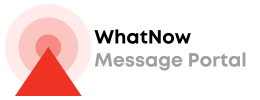WhatNow Service Toolkit
Background
This toolkit is for Red Cross Red Crescent National Societies interested in learning more and implementing the WhatNow Service in their communities. Media partners interested in learning more and connecting with their National Society - contact Nathan.Cooper@ifrc.org
To learn more, visit the activity page, download the one-pager and slide deck, and watch this video. Check out the portal and contact Nathan.Cooper@ifrc.org for an account if you are a National Society focal point.
How does it work?

- National Societies adapt key, actionable messaging to their context
- National Societies engage with media partners for the implementation of the service
- Media partners access National Societies’ WhatNow Messages through an open API and broadcast across their networks
- Communities at risk receive WhatNow Messages
- National Societies engage with communities for feedback on the process and further adapt accordingly

Why use it?
The WhatNow Service provides many benefits, both for National Societies and communities.
-
Strengthens National Society capacity in early warning early action
- Provides a set of evidence-based, hazard-specific key messaging
- Creates a hub of messaging for National Societies and partners
- Provides a tool for teams across DRR, preparedness, response, recovery, and communications
-
Strengthens partnership-building capacity
-
- Positions National Societies as a national convener around key message adaptation, harmonization, and dissemination
- Provides an opportunity to partner with governments as co-adapting messages
- Provides media with trusted key messaging for broadcast
-
-
Supports communities to safely act in the face of alerted hazards through messaging that is:
-
- Understood: localized, clear, and actionable
- Accessible: sent through many communication channels
- Trusted; from a source the community trusted - the Red Cross Red Crescent
-
How did this begin?

The WhatNow Service’s adaptation process is also rooted in PAPE’s core component of working together with other key stakeholders in crafting messaging together. It is this partnership and contextualization process that provides the foundation for the WhatNow Service messages, and guidance is provided for partnership-building.
How has it been used?

The WhatNow Service was developed in 2018 and being used by 25 National Societies.

